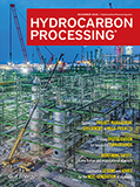August 2024
Digital Features
Digital Feature: U.S. EPA’s new Chemical Accident Prevention rule takes effect: What to know
On March 11, 2024, the U.S. Environmental Protection Agency published a final rule amending its Risk Management Program regulations. Here is what facility owners need to know about this new regulation.
This is a preview of our premium content. Thank you for your interest—please log in or subscribe to read the full article.






Comments